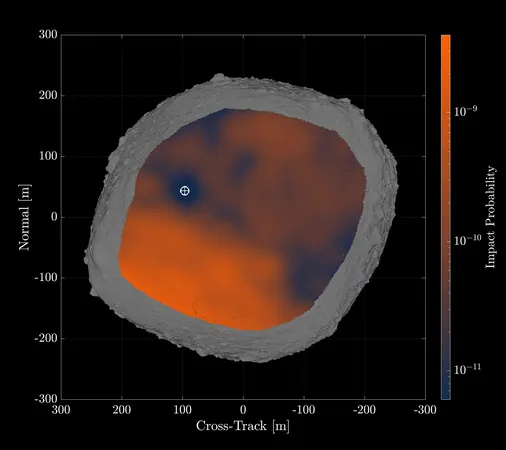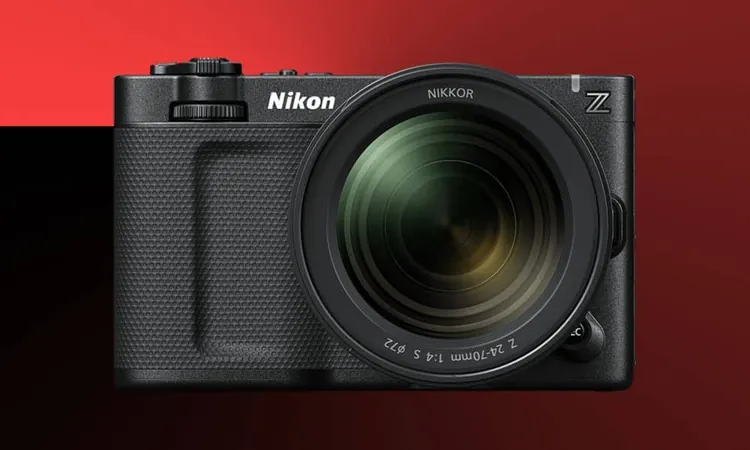
Unlocking the Secrets of Asteroid Deflection: Avoiding the Gravitational Keyhole
2025-09-09
Author: Daniel
The Quest for Safe Asteroid Deflection
When it comes to deflecting hazardous asteroids, pinpointing the perfect impact site is critical, as recent research from the EPSC-DPS2025 Joint Meeting reveals. Haphazardly smashing a spacecraft into an asteroid can unintentionally send it into a so-called "gravitational keyhole," potentially redirecting it back toward Earth later!
The Risks of Ignoring the Keyhole Effect
According to Rahil Makadia, a NASA Space Technology Graduate Research Fellow, even well-planned missions risk leading to future impacts if these gravitational traps are overlooked. "We could shift an asteroid safely away now, only to have it drift back toward us later," he warns.
DART's Bold Experiment: Successful but Caution Required
In September 2022, NASA's Double Asteroid Redirection Test (DART) demonstrated the feasibility of asteroid deflection by colliding with Dimorphos, a smaller asteroid orbiting Didymos. The mission confirmed that kinetic impacts could change an asteroid's path and protect Earth from potential collisions.
What Lies Ahead: The Hera Mission
Following the impressive results of DART, the European Space Agency's mission, Hera, is set to analyze the aftermath of this impact in December 2026. While DART's impact site was of low concern, other asteroids could be at high risk of entering dangerous gravitational keyholes with even minor orbital shifts.
Understanding Gravitational Keyholes: A Threat to Earth
Gravitational keyholes represent narrow regions in space where an asteroid’s trajectory can be altered by a planet's gravitational pull, leading it back onto a collision course. Simply put, if a dangerous asteroid passes through one of these areas after being nudged off course, the threat remains—just postponed.
Strategizing Impact Locations: Probability Mapping
To combat this issue, Makadia's team has developed innovative probability maps predicting the safest impact zones on an asteroid's surface. Each point holds a different risk level for triggering a keyhole, which adds complexity to the challenge of asteroid deflection.
Gathering Information: Ground Observations vs. Rendezvous Missions
While the most accurate data would come from space missions that provide high-resolution images of the asteroid, early analysis using ground-based observations can still yield valuable insights. However, time is often of the essence, especially for asteroids with imminent impact potential.
The Goal: Safe Deflection and Long-Term Protection
By simulating potential trajectories post-impact and identifying the most perilous paths, scientists can determine the safest locations for striking asteroids. "With these probability maps, we can ensure that when we push an asteroid away, it doesn’t come back to haunt us, safeguarding Earth for the future," Makadia asserts.



 Brasil (PT)
Brasil (PT)
 Canada (EN)
Canada (EN)
 Chile (ES)
Chile (ES)
 Česko (CS)
Česko (CS)
 대한민국 (KO)
대한민국 (KO)
 España (ES)
España (ES)
 France (FR)
France (FR)
 Hong Kong (EN)
Hong Kong (EN)
 Italia (IT)
Italia (IT)
 日本 (JA)
日本 (JA)
 Magyarország (HU)
Magyarország (HU)
 Norge (NO)
Norge (NO)
 Polska (PL)
Polska (PL)
 Schweiz (DE)
Schweiz (DE)
 Singapore (EN)
Singapore (EN)
 Sverige (SV)
Sverige (SV)
 Suomi (FI)
Suomi (FI)
 Türkiye (TR)
Türkiye (TR)
 الإمارات العربية المتحدة (AR)
الإمارات العربية المتحدة (AR)